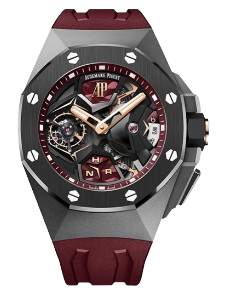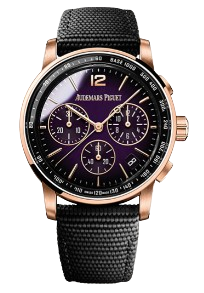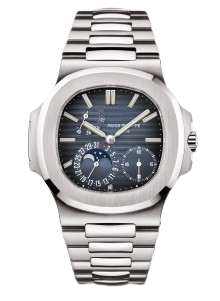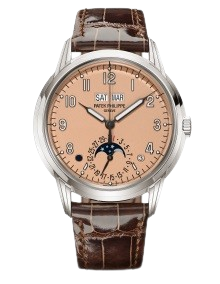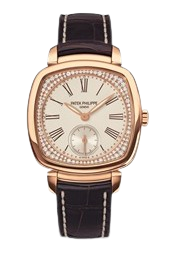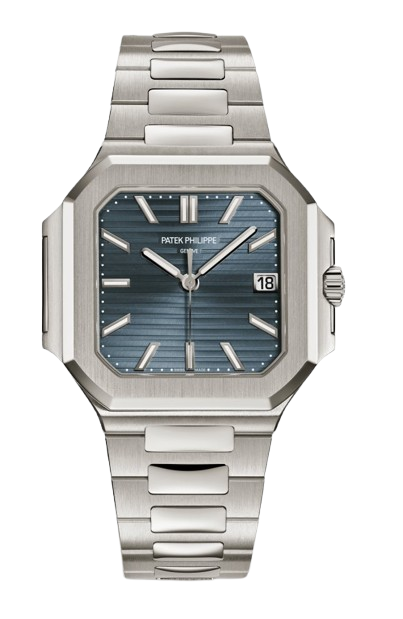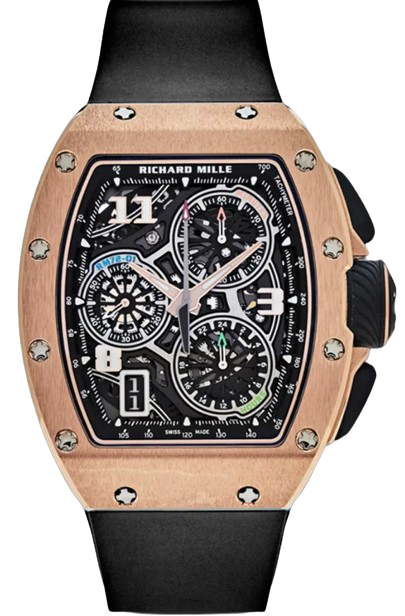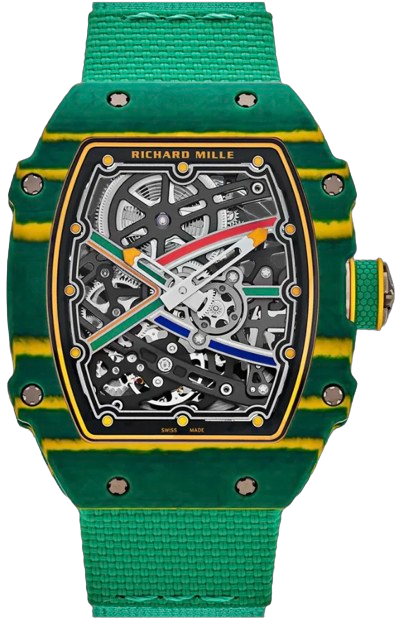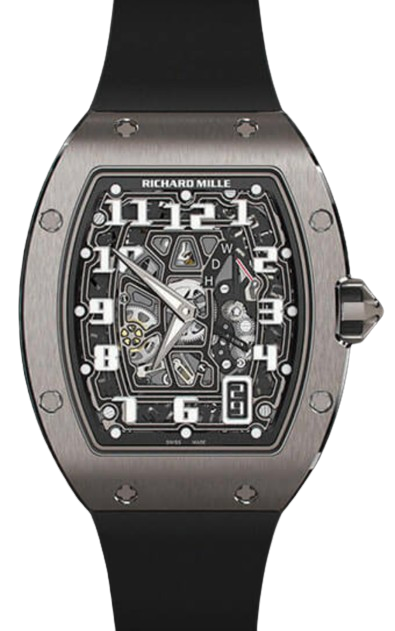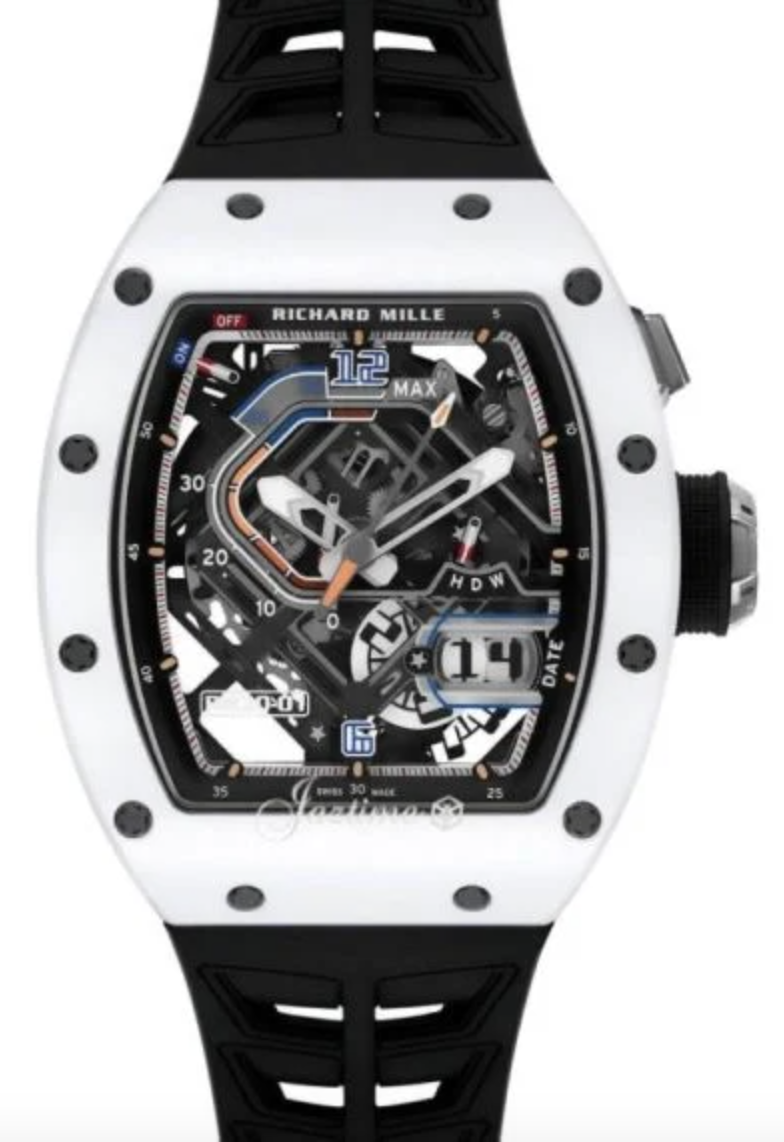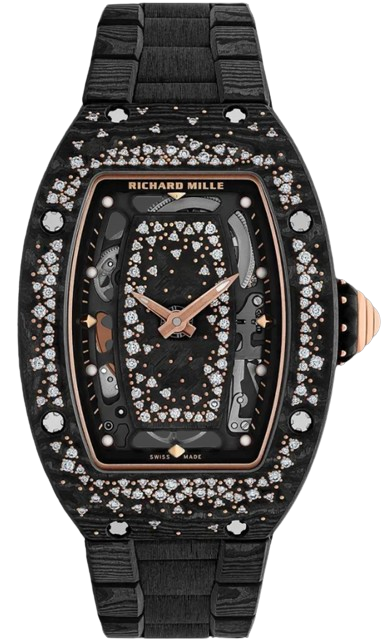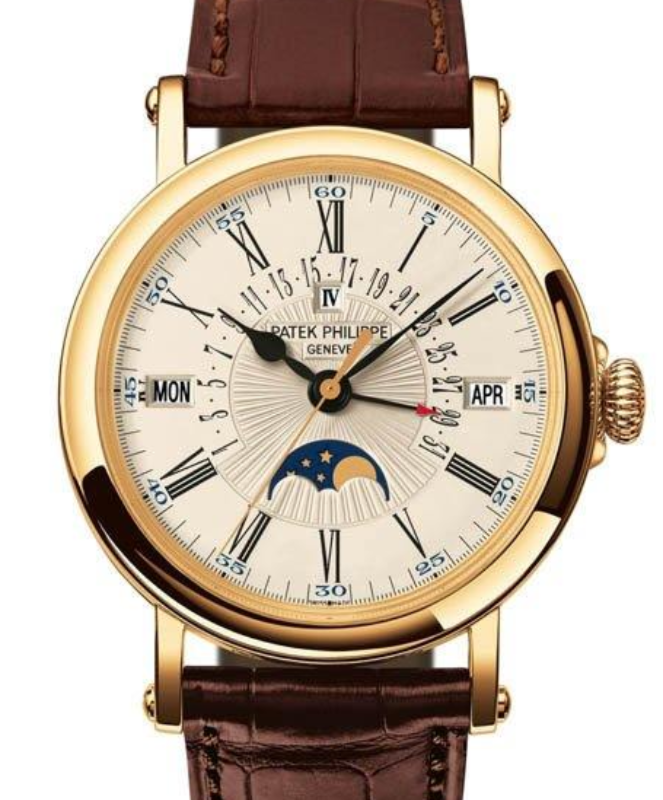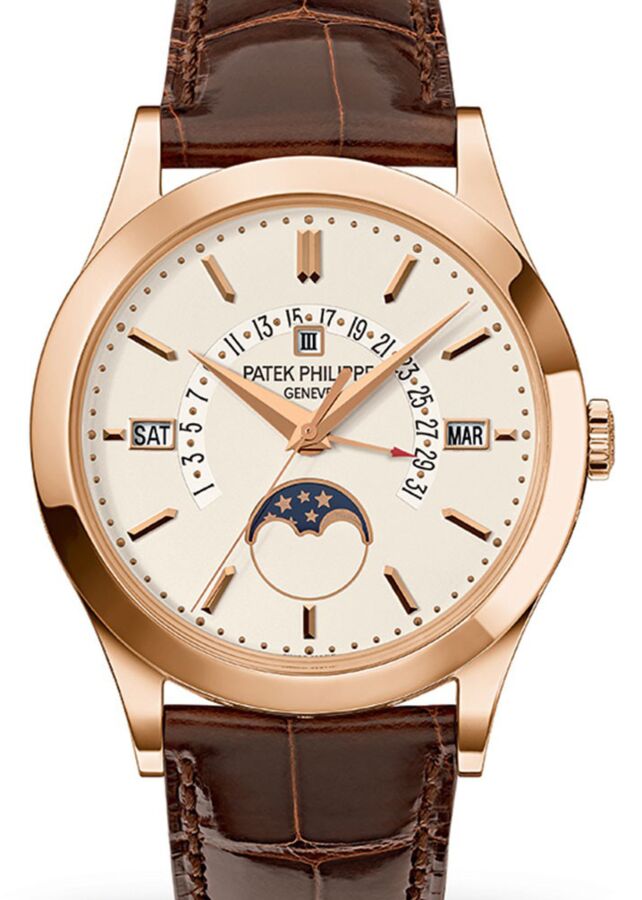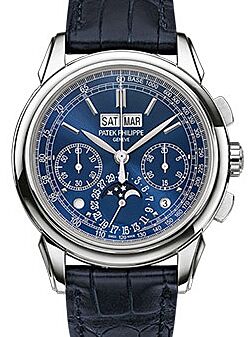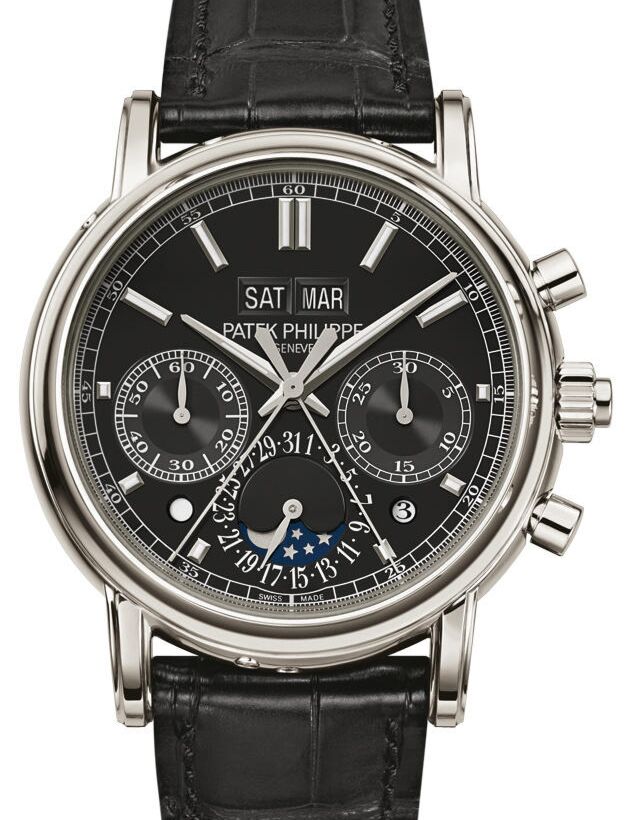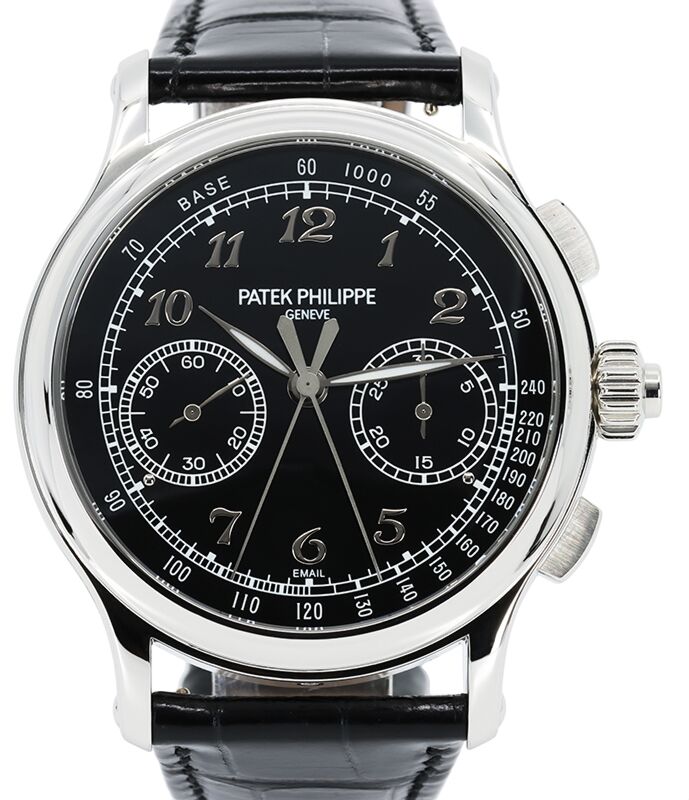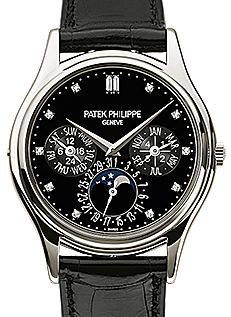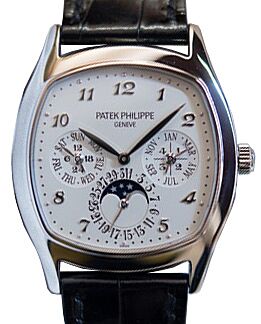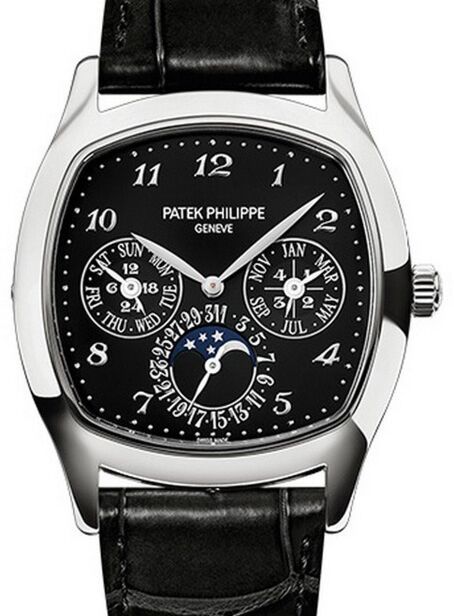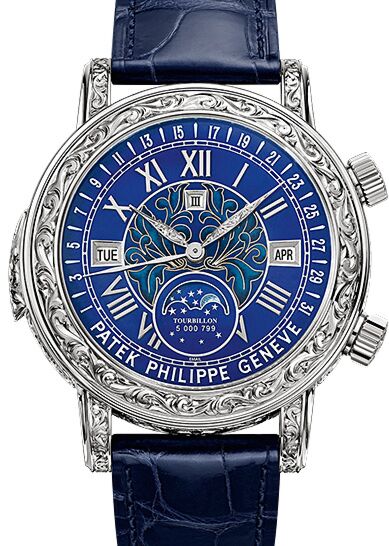Patek Philippe - Grand Complications
Patek Philippe Grand Complications Yellow Gold Perpetual Calendar Retrograde Date 38mm White Opaline 5159J-001 - BRAND NEW
Patek Philippe - Grand Complications
Patek Philippe Grand Complications Yellow Gold Perpetual Calendar Retrograde Date 38mm White Opaline 5159J-001 - BRAND NEW
Item No.
5159J-001
AvailabilityLimited Supply
8 others view this page
Retail Price:
Regular Price
$106,000
Save: $29,501 (28%)
Our Price:
Special Price
$76,499
* Prices and availability subject to change at any time and does not constitute a contract
Welcome back to Jaztime. Jaztime.com is an online store that buys, sells, and trades authentic luxury watches. We make these videos so you can easily choose the best watch for yourself in the comfort of your own home. We offer the lowest prices anywhere online, and if you'd like to know the price, simply click on the links in the description below. We would greatly appreciate if you purchase your next watch from us at JazTime.com. Today, we'll be talking about the Patek Phillipe 5159J. That's the model number for this, A Grand Complication watch, and certainly it is extremely complicated. Well, at least in terms of its functionality, that's what gives it the name, the Grand Complication. This one's a perpetual calendar with what they call a retrograde date hand, more of that in a moment. But first, we'll be talking about all the features of this watch, including the case, the dial, the crown functions, the movement, as well as the strap, and I'll be giving you my thoughts on all these features throughout this video. Now starting off with the case, we have, what they measure is a 38 millimeter. It's about 38 millimeters, it wears actually a little bit smaller, but I'll be showing you that when I put it on my wrist to give you a frame of reference. 38 millimeters from the two to eight position, or from the 10 to four position. The basic diagonal 38 millimeters. It's only 11.8 millimeters thick, or 11.8 millimeters thin. Even though it looks a little bit thicker than that, it will slide very nicely under a suit cuff. The dial, or actually no. Continue on with the case here, We have a full high polish on this case going all the way around, entirely in yellow gold. As you can see, these lugs are only really there to really hold onto the strap, and very securely as well. Also, if you'll note, there's little pusher locations all around this watch. Two at the six o'clock side, one underneath the winding crown, and one just before the noon, 12 o'clock position. More on that in a moment, actually. All right. So again, all yellow gold, there's a Sapphire crystal on the front and also on the case back, protected by a hunter style case opening back. So, let me open up this strap here and we can actually see that. You can actually see the movement through the case back, sort of indicative of the older style pocket watches from about the World War One era, before you know, the very beginning of the 20th century. All right. So it has that hunter style opening. Snaps shut very nicely. Along with the overall presentation here, a very rounded, perfectly round case, giving it that sort of officer style watch. A very evocative of that time period, the early 20th century. We have what they call an Opaline-white dial, it's basically a white dial, With a hand-guilloched center area, if I can zoom in as close as I can, entirely hand finished on that dial. All the intricacies that you can see, that honestly don't get really picked up by a video, you have to look at it with a loop. It's intricate, it's amazing. Overall, a matte finish on the style, so it's not highly reflective. It makes it easier to read, honestly. And the white background with black text. As you can see, Roman numerals, as well as Arabic numerals for the minutes. The Roman numerals nice and tall, stretched out, it gives it that sense of dignity and upright. Overall, very elegant in its presentation, sort of fitting in with this overall aesthetic of the officers watch, the pocket watch, that era of timekeeping. The hands here, also reflecting that with the land style seconds hand, and also the date apertures sort of scattered about, well, we don't actually have a date aperture. We have a day aperture, a year aperture sort of, and month aperture, with a date wheel. This is the retrograde fly back sort of date complication. All right. And now, what makes this watch so special? Well, actually, if you consider that this is a Grand Complication, it keeps track of time for 1,461 days at a time, that's literally four years, and that's how it keeps track of the leap year. So, if you take a look at the aperture, just under the 12 o'clock, there's a Roman numeral number one. If you advance that one, if you advance the month forward throughout the years, it moves up to a Roman numeral four, four being the actual leap year, at which point, the date hand, as you can see, red tipped underneath that hour hand, actually shows 29 days for the month of February. All the other years, February will only go up to 28 days. All right. And also, it keeps track of which months have 31 days and 30 days. And once it reaches the end of that month cycle, it will automatically, the date hand will automatically fly backward, giving that retrograde movement, that physical movement of the counter-clockwise sweep, so fast you won't even see it, fly all the way back to the first of the next month, at which point the aperture, displaying the month at the three o'clock, will actually advance to the next month. Now, I haven't tested this myself, but you can actually advance the day and the date using the top pusher here, using the supplied yellow gold pusher as well. All right, so pressing it down, actually, let me align this up. You have to actuate it, pressing it all the way down. All right. And as you can see, that red tipped hand is slowly moving across, along with the day aperture, at the nine o'clock position, advancing forward. And this is if you absolutely need to, once you actually set this perfectly to your time, your day, your month, and your year within the leap year cycle, you won't actually have to do this until February of 2100. That's literally 80 years from now. So yeah, that's what makes this incredible. And as you can see, just the physical movement of moving it to the 28th of February, moved it to the 1st of March. So as you can see, even the manual adjustment of that date using the pusher did actually, was actually kept, you know, within the context of the actual calendar. Now, checking out this second pusher here at the three o'clock position, this one advances a month, and by extension the year, at least within the cycle of the four year leap year cycle. All right. So once you move past December, go into January, and now the Roman numeral displayed at the top aperture is a number two, that's two years after the leap year. And so once you advance the month, all the way back around to the next year, you'll see the number Roman numeral three, as you can see right there, moving it to the fourth year in the leap year cycle, this is the actual leap year. So, let's move to February. And you can then notice that the day, or rather the date, will advance automatically after the 29th. And then after I press it one more time, March 1st. All right. And now these last two pushers down here, I believe the third one is the moon phase. This one adjusts the phase of the moon at the six o'clock position. One actuation equals one day. So, the easiest way to do so, is to set it to a new moon, and then just press it for however many days since the last new moon. To advance the waxing-crescent-waxing gibbous, to the full moon, and then to the waning-crescent-waning gibbous, or waning-gibbous-waning crescent moons. And finally, this last pusher is only to advance the day aperture at the nine o'clock position. All Right. And so doing so, you only move the day wheel, as you can see, nothing else is changing. So, if you're, you know, setting this for the first time, this is extremely helpful to help you remember which day of the week it is. And it just cycles forward without affecting any of the other complications here. And so that's what makes this the Grand Complication because all of these working together, and even separately, is just an amazing feat of engineering from Patek Philippe. And so, basically what makes this work, is the three, actually one more thing. I forgot the basic function here. At the base position for the winding crown, you can wind the watch. So about 10 winds is all you need to get to the full power reserve, more on that in a moment, why it's only 10. All right. You can pull it out to the next position, and this literally does nothing. This is sort of, a legacy position, that really doesn't do anything for the watch. But if you pull the crown out to the final position, note that the seconds hand is still going, but you can adjust the minute hand by rotating the crown. Now, if you put a little bit pressure on that minute hand going backward, you can actually make that seconds hand move backward, or even stop. And that is sort of, part of the Patek Philippe movement magic there. If you're experienced with setting the time on a Patek Philippe watch, you can use this to sort of get your own manual version of the hacking seconds function that you would find in many other watchmakers movements. All right. So set it, and to ensure that superior water resistance, I believe down to a hundred meters or 30 feet or, you know, it's actually only 30 meters of water resistance. So, I actually wouldn't take this further than surface swimmable, And honestly, for a watch like this, you probably won't be going into the water any time soon, given that it does come on a leather strap, and only on a leather strap, more on that in a second. But first, what makes all of this work is the 324 S QR self winding movement. Now, I was going to say you can't see it through the case back, but you actually can. Again, using this hunter style case back opening. Nice high Polish on the inside of that case opening there. You can see that there are hallmarks as well, to reflect that you are working indeed with yellow gold here. And on the inside, we have the movement as well. All right. A perpetual calendar with retrograde date hand, as I showed earlier. It has a diameter of only 28 millimeters, at 5.35 millimeters thick, 361 total parts with 30 jewels. It has a power reserve of between 35 and 45 hours. So that's less than two days. You have fewer than two days, less than two days, if you were to set this watch down. Now setting this down, this watch actually does come brand new with a winder integrated into the box. And so, when you place this down into its box, you can actually turn on, flip a switch on the box to turn on the winder, and doing so will allow this watch to basically rotate in place four times an hour, and that allows you to keep that power reserve. More importantly, you keep the time, the day, the date, the month, the year, as well as even the moon phase, and the day of the week, without actually having to rely on the pusher every couple days. So, very good and thoughtful, thoughtful supply from Patek Philippe there. Again, this movement has a 21 karat winding gold central rotor. As you can see on the inside, it allows you to wind the watch as you wear it on the wrist. So, if you wear this every day, then there's no need to worry about the winding of this watch, it'll stay wound on your wrist thanks to the natural movements of your wrist. It keeps a vibration per hour rating of 20,800 vibrations per hour, or four Hertz. That's eight little ticks of that center Mount at seconds hand. Keeping that very accurate, and even precise timekeeping that you would know that Patek Philippe would have. They also have a spiromax downspring with a gyromax balance. So what does that mean? That means you can get relatively close to magnets, you can take a few bumps, it'll be keeping track of time just fine, no issue there. All right, now onto the strap here, a very excellent framing from Patek Phillipe. A brown alligator leather strap, large scales becoming smaller and smaller as you reach this clasp. This clasp is also a pin buckle, as you can see. It's a fold-over clasp, entirely yellow gold, complete with my fingerprints, as well, as you can see. And the pin buckle on the inside allows you to set this on the fly, should you ever need it. A nice tan finish on the underneath, with a matching brown stitching that goes all the way through. All right. And now on the wrist, how does it look? Well, let's see. Keep in mind that there are minder loops. So be sure to thread first, before pressing it onto the hand. Now also keep in mind, this is the Patek Philippe seal, this Geneve, or this Geneva cross right here on this clasp. All right, now, on the wrist, 38 millimeters in diameter. This one has a lug to lug distance of 46.5 millimeters, and actually that's pretty short for a watch that has so much in it. Keep in mind, my wrist is seven inches in circumference, or 18 centimeters. So, for me, this is actually a bit on the larger side, but I think I can forget that because of the way that these lugs work. That lug to lug distance of 46.5 millimeters, is actually, again, a bit smaller than I would actually expect for a watch like this. So I do get plenty good framing of that bracelet, that leather strap going all the way around on my wrist. And thanks to the minder loops, it keeps it nice and tight against my wrist. Going down the wrist here. There's a nice profile here, just under 12 centimeters, slides very nicely under a suit cuff, will definitely fit under a jacket sleeve. Nice venting of the wrist, thanks to how these lugs sort of protrude actually a little bit farther than it seems. But, well, not as far as it seems, but it seems farther than it really is. That's the phrase I'm looking for. So, there's plenty of space underneath the lugs, at least for me. If you have a larger wrist, maybe not so much, but there's plenty of space between the band and the case for, you know, good wear ability, especially on a leather strap, such as this. Fits very nice on the wrist. And with all that complication on here, I can't complain. It's incredibly light for how it is, especially with the solid yellow gold construction. Keep in mind that if you do want to switch out these straps, you will require the use of the correct size of screwdriver to unscrew this. So, keep that in mind. Not that it's too hard to change out straps, you just need the time and experience to do so. So, enough of what I think. What do you guys think about this watch? Let us know down in the comments below. And, would you pick this one up, or would you pick up the rose gold version, or even the white gold version of this watch? You can see all of those on our website at jaztime.com, where you can get any of these watches for the lowest possible price, anywhere on the internet. All right. And be sure to like, subscribe to this video. Like this video, subscribe to our channel. And hit the bell notification, so you can be notified when we go live with another video like this one. And as always, if you'd like to purchase this watch or any other watch visit our website at jaztime.com. Link's in the description below, where you can get it for the lowest possible price online. Take care, and we'll see you in the next one.
Products from the same series
Patek Philippe Grand Complications Retrograde Perpetual Calendar Silver Opaline Dial 5496R-001
Retail Price:
Regular Price
$85,100
Save: $33,101 (39%)
Our Price:
Special Price
$51,999
Patek Philippe Grand Complications Chronograph Perpetual Calendar White Gold Silver Opaline Dial 5270G-018
Retail Price:
Regular Price
$183,000
Save: $68,001 (37%)
Our Price:
Special Price
$114,999
Patek Philippe Grand Complications Chronograph Perpetual Calendar Rose Gold Silver Opaline Dial 5270R-001
Retail Price:
Regular Price
$187,470
Save: $57,471 (31%)
Our Price:
Special Price
$129,999
Patek Philippe Grand Complications Chronograph Perpetual Calendar White Gold Blue Dial 5270G-019
Retail Price:
Regular Price
$183,000
Save: $43,001 (23%)
Our Price:
Special Price
$139,999
Patek Philippe Grand Complications Split-Seconds Chronograph Perpetual Calendar Platinum Black Dial 5204P-011
Retail Price:
Regular Price
$347,600
Save: $117,601 (34%)
Our Price:
Special Price
$229,999
Patek Philippe Grand Complications Platinum Split-Seconds Chronograph Black Dial 5370P-001
Retail Price:
Regular Price
$297,530
Save: $147,531 (50%)
Our Price:
Special Price
$149,999
Patek Philippe Grand Complications Annual Calendar Moon Phase Black Diamond Dial Platinum Bezel Black Leather Strap 37.2mm 5140P-013
Retail Price:
Regular Price
$107,700
Save: $42,701 (40%)
Our Price:
Special Price
$64,999
Patek Philippe Grand Complications Perpetual Calendar Day-Date Moon Phase Silver White Gold 5940G-001
Retail Price:
Regular Price
$87,200
Save: $37,201 (43%)
Our Price:
Special Price
$49,999
Patek Philippe Grand Complications Perpetual Calendar Day-Date Moon Phase Black Arabic White Gold 5940G-010
Retail Price:
Regular Price
$87,320
Save: $38,321 (44%)
Our Price:
Special Price
$48,999




